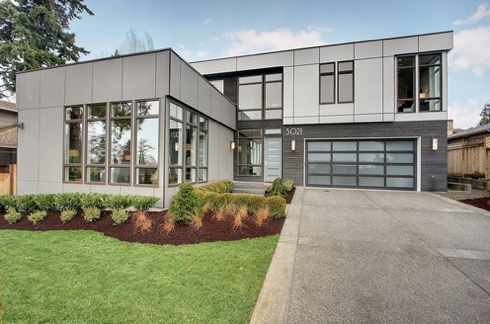Is New Housing Conniving, Rude and Rapacious?
Yesterday in Crosscut Mark HInshaw posted what could only be called an emotional outburst about new development in Seattle. His point seemed to be that new development is hurting Seattle’s sense of community. New housing, especially in single-family neighborhoods is too big and ugly and we shouldn’t build any more of it unless it’s tiny cottages that won’t produce a return on investment for private developers. Let’s look at some basic facts that Hinshaw ignores.
- Smaller houses—most new single-family home construction is of modest scale. Occasionally large houses do get built in the city, but that’s the exception not the rule. Take a look at the Blueprint Capital website and you’ll see lots of two story houses that fit quite well into their context.
- Housing opportunity—Seattle City Councilmember Richard Conlin said it well when he said that we need more housing in Seattle’s single-family neighborhoods because families need as many housing opportunities as possible. Building smaller homes in single-family neighborhoods increases choices and options for families moving to Seattle.
- Growth management—Hinshaw seems to want to force the issue: require so many limits to new housing that anyone trying to “build a house on a remnant lot that is, say 1,000 square feet, would be stuck with building a tiny, cottage-like dwelling. For most rapacious people, the trouble would hardly be worth it. And even if they managed to make it work financially, the impact on neighbors would be pretty minimal.” That means new people moving into Seattle who want a single-family home would have a choice between Hinshaws impossibly small cottage or a real house in the suburbs. Hinshaw’s limits would make it more likely that those families wouldn’t be living in Seattle but outside the city which undermines the principles of growth management.
- Building is a business—building is a business and Hinshaw seems to think that builders, developers, and architechts make too much money doing infill development. That’s a strange sentiment considering that often developers lose money on projects; nothing is certain in the world of development. Hinshaw seems peeved that people who take risks end up making money back in excess of what they spent to build the project. It’s hard to see what the alternative would be; publicly funded single-family home construction? Or, as is probably the case, Hinshaw probably doesn’t want any new single-family home construction.
Smart Growth Seattle is committed to going forward, supporting predictability for single-family development through good rules and planning. The City seems committed to encouraging development in single-family neighborhoods because it makes sense, is consistent with the Comprehensive Plan, and it creates jobs. We also think that we should unfurl the welcome mat for people interested in living in Seattle. That’s the way to build community, while Hinshaw seems to characterize new people moving into the city as “double-income earning couple[s] with a penchant for conspicuous consumption.”
Hinshaw, also, has a pretty negative view of the people who build housing in Seattle:
We have had a history of people in the development sector who look for ways to misuse or stretch well-intended regulations for their own financial gain. And what that does is paint everyone else doing development as conniving, rude and rapacious.
It seems doubtful that increasing housing choice, creating jobs, and supporting the principles of growth management fits anyone’s definition of “conniving, rude, and rapacious.”
Photo of new single-family development from Blueprint Capital


